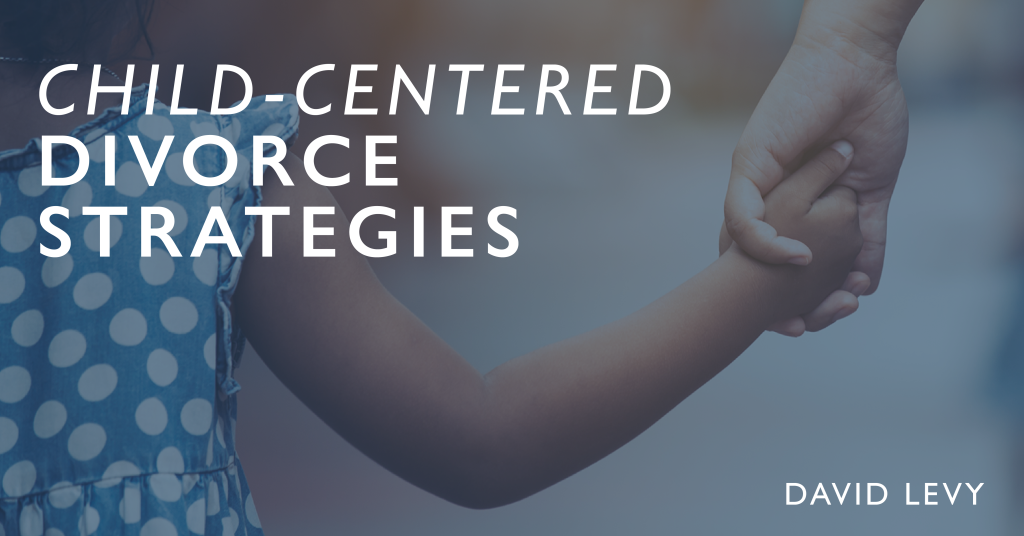
Divorce is a life-altering event for the entire family, not just for the spouses but for the child(ren) caught in the middle as well. Unfortunately, I’ve seen parents engage in conduct that is clearly detrimental to their children. Even parents who mean well make choices that add to their children’s anxiety and fear. Speaking negatively about the other parent or using the child as a messenger can lead to lasting emotional scars in kids.
Fortunately, parents who approach their divorce with awareness and intentionality can help their children navigate the process feeling secure and supported. Here’s how to avoid some common pitfalls and ensure your children remain the priority during your divorce.
Common Parenting Missteps During Divorce
Kids are sponges; they soak up love effortlessly and have infinite capacity to accept it. Love is not a zero-sum game. The fact that they love one parent does not mean they love the other parent less. Children do best when they know it is okay to love both parents and they are not being “disloyal” by giving and accepting love from the other. Every parent should encourage the love for the other parent.
All too often, parents can act in ways that undermine the other parent, and their kids are caught in the crossfire of the situation. For example, one parent may use subtle digs like, “Your dad doesn’t even want to see you today,” even though his inability to be with the children is both understandable and unavoidable. Instead, his absence could and should be explained by saying, “He’s sorry that he can’t make it tonight, and he still loves you.”
Another typical remark I’ve heard divorcing parents make to children is something to the effect of, “Go ask your mother to buy you the new pair of shoes; that’s why I pay her so much money.” Even if the parent does not intend to intentionally harm the child’s relationship with the other parent, statements like these can force a child to choose sides.
Parents may also intentionally create obstacles to the child’s relationship with the other parent. Overscheduling activities that impact the other parent’s time with the children or withholding important information about the child’s activities from the other parent is far too common and should be avoided. A child needs both parents actively involved in their life so they may thrive. Co-parenting may not come easily, especially when communication is strained, but it is an aspiration worth striving for when the child’s well-being is at stake.
Supporting Children Through the Process
By shifting focus from conflict to collaboration, parents can take meaningful steps to protect their children’s welfare during the divorce process. One of the most effective ways to help them through this transition is by maintaining open and age-appropriate communication. Children benefit when parents assure them of their love and continued presence, as well as when parents speak respectfully with each other.
Additionally, it’s important to recognize that children may need help processing the effects of the divorce, particularly in an environment where they can express what they feel safely and confidentially. I often recommend that parents enlist the support of a mental health professional for their child or a therapeutic program like Rainbows for All Children.
Parents may also find value in working with a parenting coach to strengthen co-parenting dynamics and minimize conflict. When possible, establishing consistent routines and expectations at both households can further help kids feel secure. Above all, applying common sense in everyday decisions can go a long way toward shielding children from unnecessary stress.
Legal Advocates for Children
In some cases, the court may appoint professionals to assist in ensuring that a child’s needs and interests remain front and center during divorce. There are basically three types of child-focused court appointments that judges use to assist them in determining the best interests of the children.
A Guardian ad Litem (GAL) is appointed by the judge to be the “eyes and ears” of the court. The GAL’s role is to conduct an independent investigation by interviewing the child, the parents, family members, teachers and other relevant individuals and provide recommendations regarding the child’s best interests. While parents and attorneys can request certain GALs, they can neither insist on a specific person nor veto them. It’s up to the judge to designate who the GAL will be. However, the court will often appoint a specific individual if both parties agree.
A Child’s Representative serves a dual role: conducting investigations similar to a GAL while also functioning as an attorney who advocates for the child’s best interests rather than adhering to the child’s expressed desires. He or she actively participates in the court proceedings.
An Attorney for the Child is duty-bound by the child’s directives and represents their wishes in court, even if those wishes don’t align with what others believe is best for them. This type of appointment is far less common and is saved for the most egregious and difficult circumstances.
Outside of court, a Parenting Coordinator may be agreed upon to help with day-to-day parenting disputes and facilitate communication between parents.
Involving any one of these child-focused professionals early in the process can prevent minor issues from escalating into major disputes. Besides keeping the child’s best interests at the forefront, they also provide valuable support by providing neutral insights that can bridge gaps between parents. In many cases, their involvement often facilitates more effective decision making and paves the way for negotiated agreements, reducing drawn-out court battles. While there are upfront costs associated with using these professionals, they can save families time and expense in the long run by avoiding prolonged litigation.
While divorce inevitably comes with its share of challenges, especially for children, parents can mitigate its impact on their kids through mindful choices. By prioritizing their child’s well-being throughout the process, they lay the groundwork for healthier outcomes.